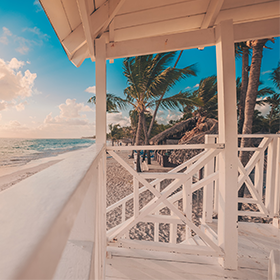You Asked, We Answered: How to Use Your Retirement Funds to Invest in Offshore Real Estate
 Estimated reading time: 3 minutes
Estimated reading time: 3 minutes
During last month's national webinar we discussed how to use retirement funds to invest in offshore real estate. Participants who joined our free webinar had the opportunity to ask our Business Development Manager, Bill Neville questions regarding the dos and dont's of the offshore real estate investment market.
Continue reading to see what questions were answered.
Q: Can a property owned in whole or in part by the IRA be occupied by the investor once they reach age 70 ½?
A: No, there is no provision in the law that allows an IRA investment that has not been distributed to be used by a disqualified party after reaching the age of 70 ½.
Q: How do we handle a situation where an investment is funded between me and my IRA, but the investment needs additional capital?
A: If you (your IRA or personally) own at least 50% of the investment, the investment becomes a disqualified entity. Funding additional capital as a subsequent transaction can be problematic. It's always best to consult with your tax advisor.
Q: What if I wanted to buy land in a foreign country (Mexico) that is not going to generate income for a a few years?
A: Property that does not produce income is not an issue. When there is no cash to pay for expenses, that's when a problem arises. An IRA holder can transfer assets from another IRA or the IRA holder can make a contribution if they are eligible.
Q: If I sell a property where I own a percentage individually, and my IRA owns a percentage, do I get taxed on my pro-rate distribution? My IRA percentage doesn't get taxed, does it?
A: The answer is yes. You will only get taxed on the gains from the sales proceeds that you receive. If the sales proceeds from the percentage that the IRA owns goes back to the IRA, that portion will not be taxed and be maintained on a tax deferred basis.
Q: At the age of 70 ½, are you forced to take distribution from your foreign property? How is it calculated?
A: If you have a Traditional IRA, you have a required minimum distributions (RDMs) once you reach age 70 ½ regardless of where the investment is located. The amount is calculated by dividing the prior year's end fair market value of the IRA divided by a life expectancy multiple based on your age. The life expectancy multiple is called the Uniform Lifetime Table found at the back of the IRS publication 590B.
Q: If there is a mortgage on real estate in a Self-Directed IRA is there any taxable portion?
A: Yes, taxation lies on income received from the property based on percentage of the leveraged portion of the investment. The tax is called Unrelated Debt Financed Income (UBIT).
A: Is there a minimum amount that you must have in your IRA account before investing overseas real estate?
A:There is no minimum amount for the IRA. You will need to check with the investment company if they have a minimum since Entrust does not offer the investment.
Q: Is it better to use a ROTH IRA or a Traditional IRA for purchasing foreign land?
A: It depends on what your goals are. It would be best to sit with a competent tax advisor and explore the pros and cons.
Q: I already have a Self-Directed IRA with Entrust. Can I establish a new Self-Directed Roth IRA and contribute my already taxed income into this fund for a future real estate purchase?
A: If I understand your question correctly, you can convert your Traditional IRA to a Roth IRA and will only be taxed on the portion that has not been taxed. Once the assets are in the Roth IRA, you can invest in any investment you wish as long as it’s not prohibited.
Thank you to everyone who participated in our national webinar. We encourage our readers to post any additional questions regarding Self-Directed IRAs or retirement planning in the comments section below.
You can view the full recording of the webinar here to get answers to questions which are not listed in this article.






























0 Comment